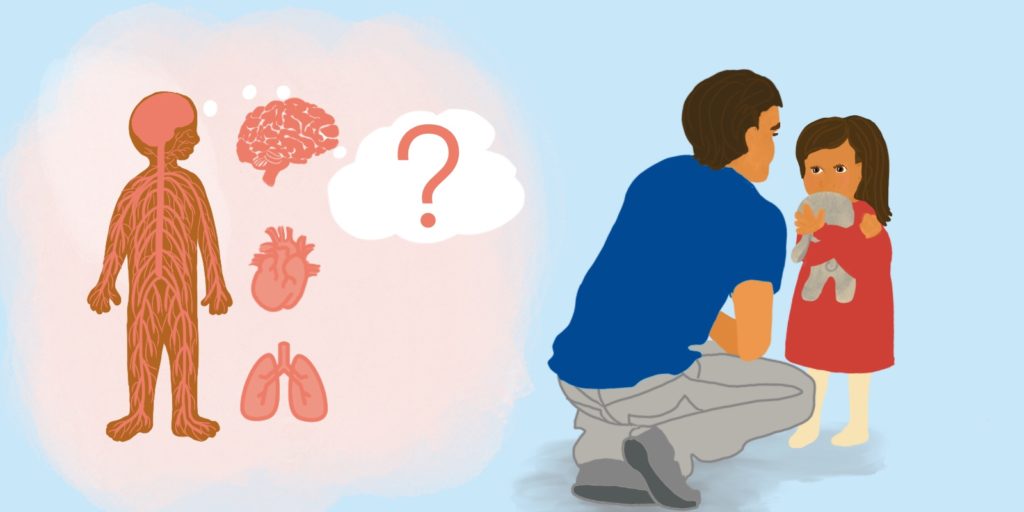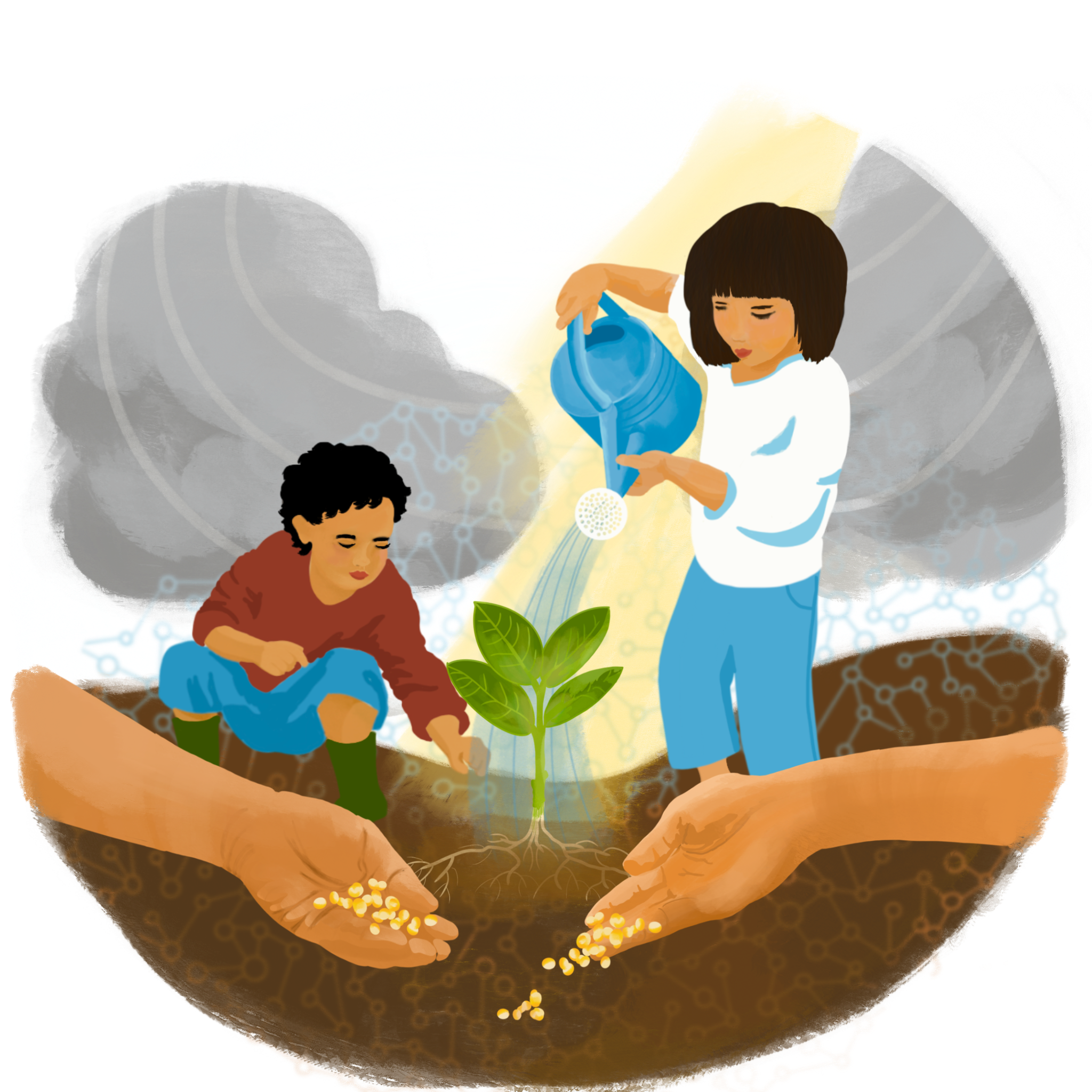Can you remember comforting someone who was feeling sad, anxious or distressed? And can you remember how you felt afterwards?
We humans are able to share feelings without having to express them in words. Quite often, we “mirror” others’ feelings without even noticing. This means that we can “catch” sadness, anger, and worry from each other, but also joy, courage and feelings of hope! By taking good care of yourself, you can pass on helpful feelings to your child. Here is an activity that can help. It starts with a question:
“Which of your toys needs a cuddle?”
1
Help your child choose an animal or doll that is feeling sad or anxious, perhaps because it’s all alone or because it doesn’t know what’s going to happen next. Choose an animal that you can use to show your child how to comfort theirs.
Invite your child to hug their animal tightly and ask them “Can you take really good care of him?” This activity only works if your child wants to do it.

2
Show your child how to comfort their toy. Maybe they want to whisper some comforting words in their ear?
If you want, you can demonstrate the “butterfly hug” for your child. Cross your arms over the animal and gently pat your right and left shoulders or upper arms, alternating between both sides regularly, in a tempo that you find pleasant.
Notice what happens to your breathing, and any other changes in your body.

3
You and your child comfort your toys together. Pay attention to any changes that you can see – breathing, muscle tension, gaze, facial expression?
What changes do you notice in yourself? If you notice any pleasant changes, you can encourage your child to notice them too. You can do this by telling them what you see, and asking if they want to take some time to notice it. Also, you can ask them where they can feel comfort inside their body, and if they want to take some time to enjoy that pleasant feeling.

Adapted from the “Huggy-Puppy Intervention”, https://www.nbci.nlm.nih.gov/pubmed/215945
WHAT CHANGES DID YOU NOTICE IN YOURSELF AND YOUR CHILD?

FACE – relaxed or tense?
BREATHING – shallow or deeper?
MUSCLES – loose or tight?
VOICE – soft or “pressed”?
MOVEMENT – any changes from still to lively, or agitated to calm?
TRY THIS TO HELP YOUR CHILD UNDERSTAND HIS OR HER FEELINGS:
Did your child express any new, helpful thoughts or feelings when he or she felt less distressed?
Try to imagine any thoughts or feelings they might be having and ask to see if you’re right… or not! We can’t actually read each other’s minds, but by trying and checking how close our guesses are, we can help each other feel seen and understood.









